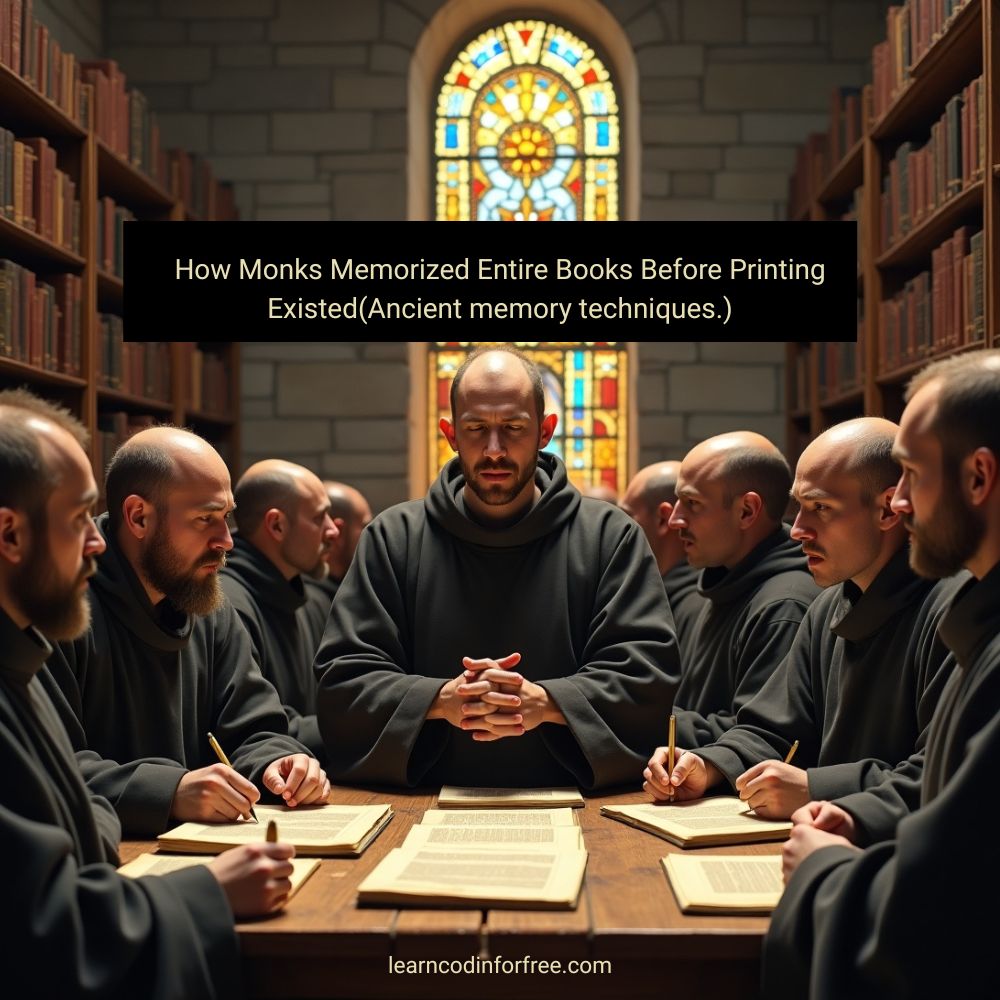
In an age before printing presses, smartphones, or even widespread literacy, medieval monks accomplished an astonishing feat: they memorized entire books—word by word. From sacred scriptures to philosophical texts, these scholars relied on an ancient technique called the “Memory Palace” to store vast amounts of knowledge in their minds.
“The palest ink is better than the best memory.”
— But monks proved even ink is optional.
How did they do it? And could this 2,500-year-ancient method help you learn faster today?
The Monastic Challenge: Memorizing Without Paper
Before the printing press (invented in 1440), books were handwritten on vellum, making them rare and expensive. Monasteries served as Europe’s intellectual hubs, and monks preserved knowledge by:
Copying texts by hand (a single Bible took 3 years to transcribe!).
Committing entire works to memory to prevent loss.
But memorizing a 1,000-page Bible seems really impossible—unless you know the secrets of the Memory Palace.
What Is the Memory Palace?
The Method of Loci (Latin for “places”) is a mnemonic device dating back to Ancient Greece.
Here’s how it works:
Visualize a Familiar Place – A palace, cathedral, or even your home.
Assign Information to Locations – Each room or object holds a piece of data.
Take a Mental Walk – To recall, “walk” through the space and retrieve the info.
Why It Works?
The brain remembers images and spaces better than words.
It leverages spatial memory, a primal survival skill.
How Monks Used Memory Palaces
Medieval monks adapted this technique in three key ways:
1. Sacred Architecture as a Mental Library
Monasteries were designed with symbolic layouts (e.g., 15 chapels = 15 apostles).
Monks associated verses with specific altars, stained glass, or cloisters.
2. Chanting & Sensory Anchors
Gregorian chants created rhythmic patterns for recall.
Smells (incense), textures (rosary beads), and colors reinforced memory.
3. The “Chain of Memory” Technique
Linked concepts like a story (e.g., “The Garden of Eden holds Genesis, the Ark holds Exodus”).
Used emotional triggers.
Scientific Proof of Why This Still Works Today
Modern neuroscience confirms the power of the Memory Palace:
MRI scans show spatial memory activates the hippocampus, the brain’s “save button.”
World Memory Champions (like Nelson Dellis) use this to memorize decks of cards in minutes.
Medical students employ it to learn anatomy.
Example: Memorizing a Speech
Imagine your living room couch holding the introduction.
The kitchen table stores your main points.
The conclusion waits at the front door.
How You Can Build a Memory Palace
Step 1: Choose Your Palace
Start small (your bedroom, office, or commute route).
Step 2: Assign Key Information to Spots
Need to remember a grocery list?
vegetables on the doormat.
Eggs cracking on the sofa.
Bread in the bookshelf.
Step 3: Make It Vivid & Absurd
The weirder the image, the stickier the memory (e.g., a giant apple on your bed for “buy apples”).
Step 4: Practice the Walk
Mentally revisit often to reinforce.
Monastic Wisdom for the Digital Age
While we rely on smartphones, monks teach us:
✅ Depth over distraction – Focused beats fragmented learning.
✅ Creativity over cramming – Fun visuals last longer than rote repetition.
✅ Mindfulness over multitasking – Memory Palaces demand full attention.
Try It: Memorize a poem, speech, story or even a foreign language using this method.
